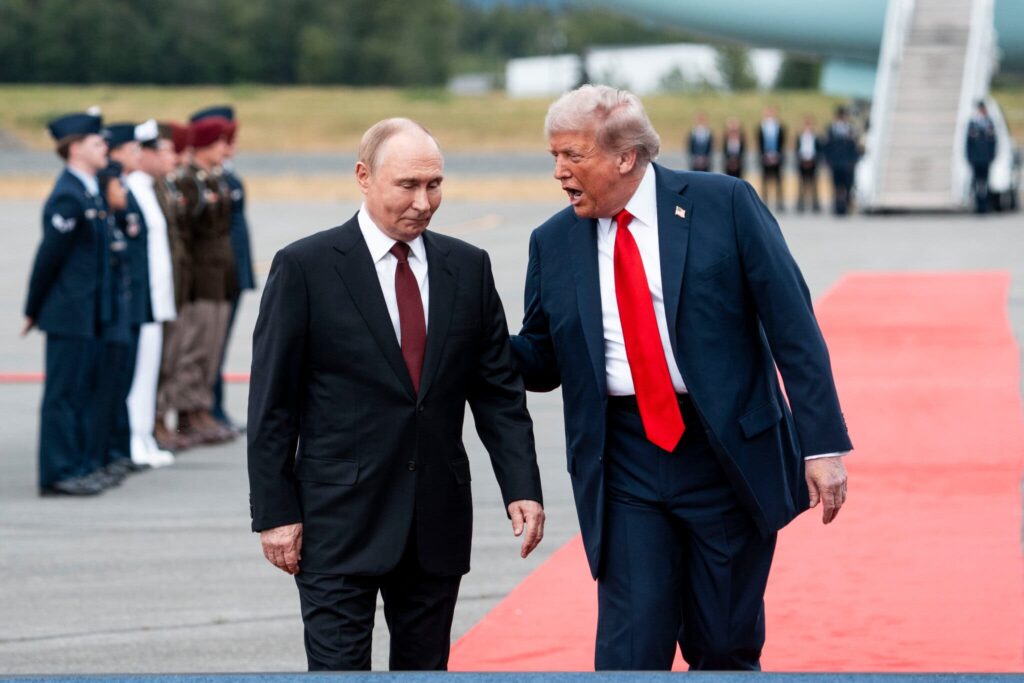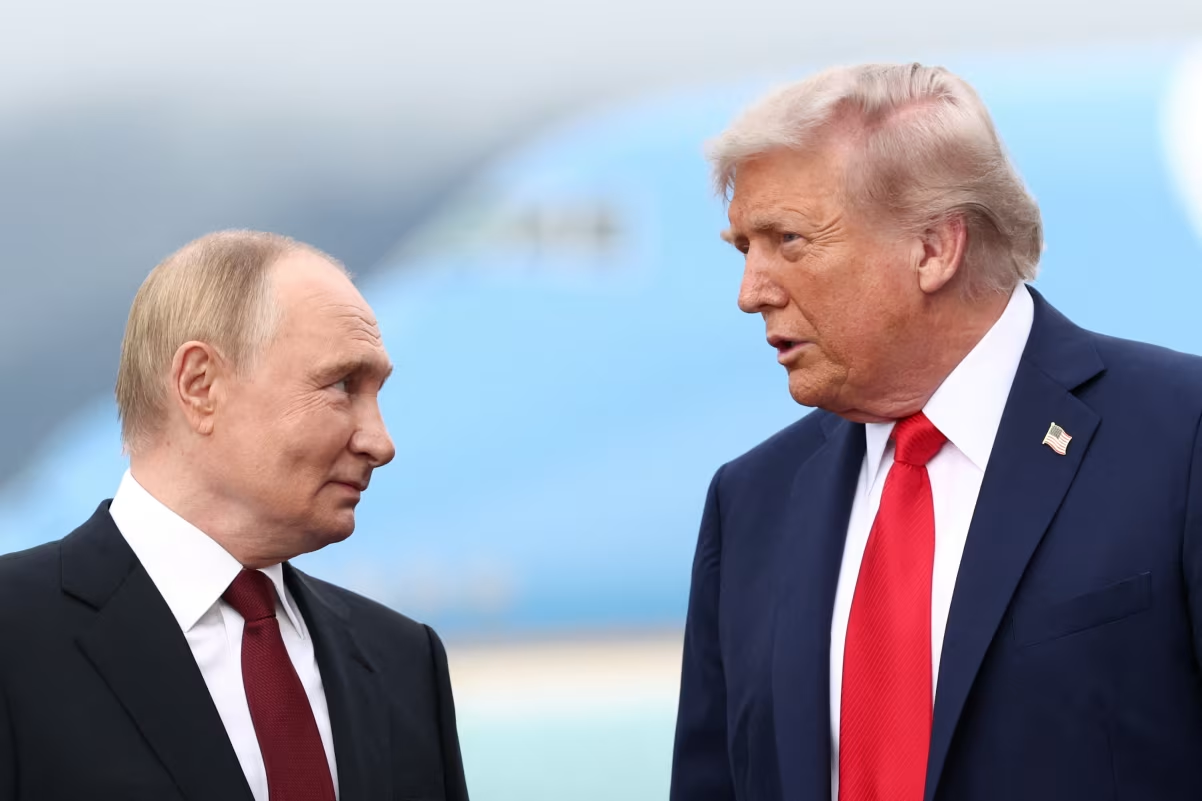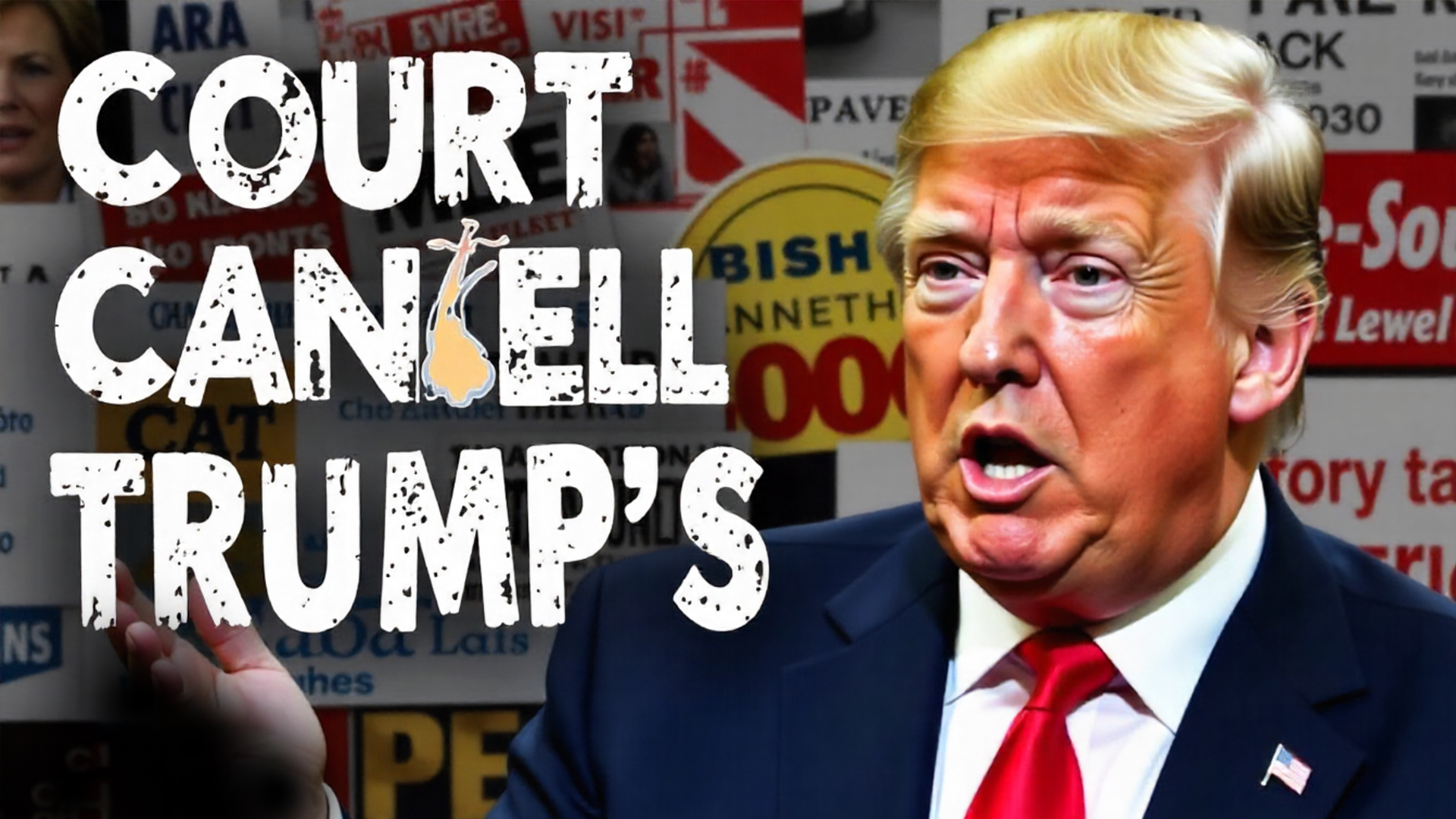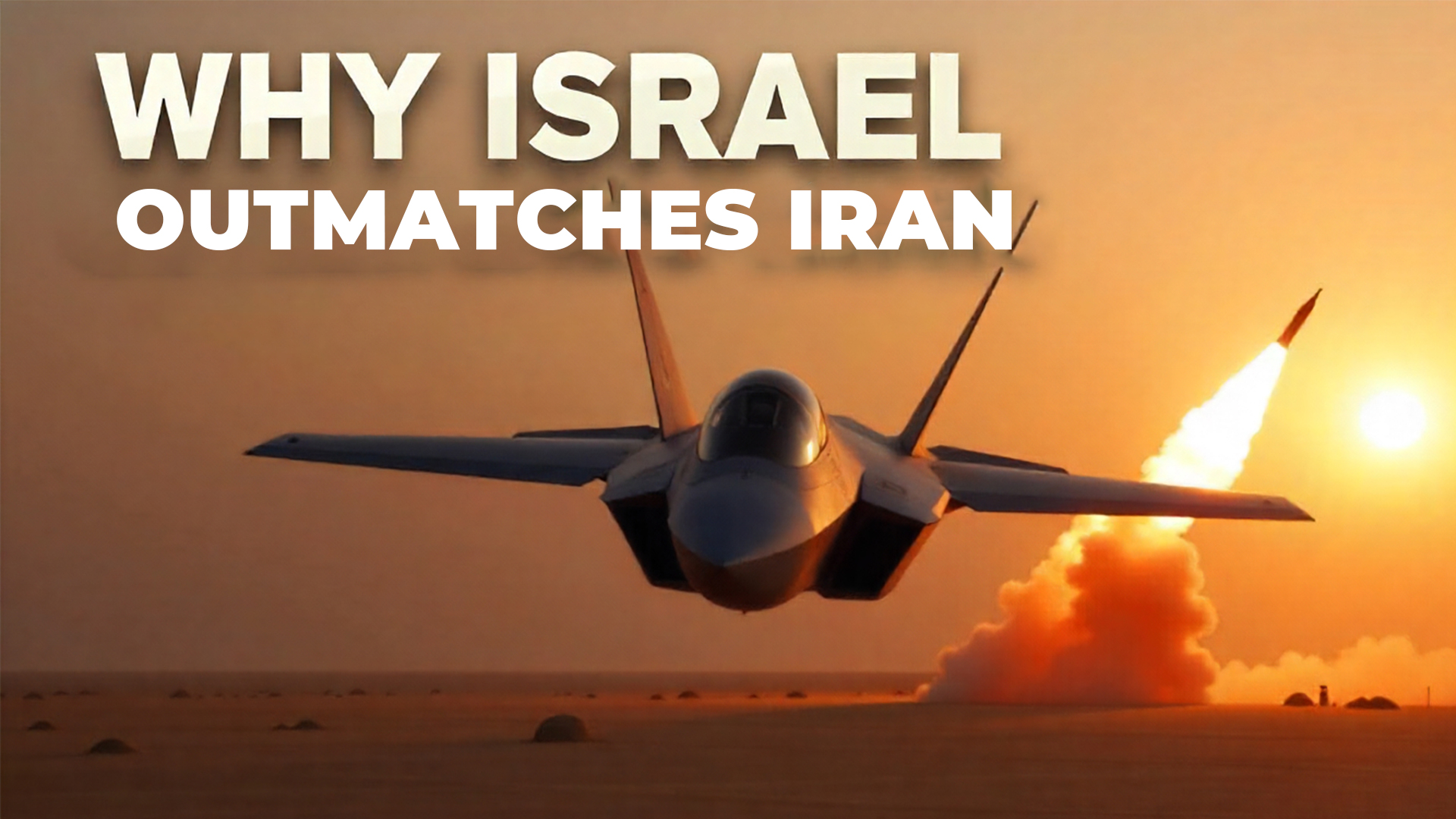How the Alaska Summit Exposed Empty Promises to Punish Putin and End Ukraine’s Nightmare
On August 15, 2025, President Donald Trump met Russian President Vladimir Putin at Joint Base Elmendorf-Richardson in Anchorage, Alaska, in a highly publicized summit billed as a critical step toward ending the war in Ukraine. The event, draped in the optics of diplomacy with a red carpet, fighter jet flyovers, and the slogan “Pursuing Peace,” was meant to showcase Trump’s dealmaking prowess and deliver on his campaign promise to resolve the Russia-Ukraine conflict swiftly. Yet, as the dust settled on the nearly three-hour meeting, no ceasefire was announced, no concrete agreements were revealed, and the war’s brutal reality marched on. This summit, rather than a breakthrough, laid bare a pattern of Trump’s unfulfilled threats against Putin and raised questions about his ability to influence Russia’s actions in Ukraine.
A History of Hollow Threats
Throughout his second term, Trump has repeatedly vowed “severe consequences” for Putin if Russia did not halt its aggression in Ukraine, which has killed hundreds of thousands and displaced millions since the full-scale invasion began in 2022. As early as August 2, 2025, Trump declared that Russia would face “crippling sanctions” if Putin did not comply with a ceasefire by a specified deadline. Yet, when that deadline passed without action, the promised sanctions never materialized. Instead, Trump announced the Alaska summit, a move critics argue rewarded Putin’s intransigence with a prestigious platform on U.S. soil—his first visit in a decade.
Posts on X captured the growing skepticism. One user remarked, “Trump was supposed to punish Putin with sanctions if he didn’t agree to a ceasefire by today. Instead, Russia terrorized civilians in Bucha and Odesa last night, and Putin and Trump are organizing a summit. The Trump ‘pivot’ to Ukraine was a sham”. Another noted, “Putin totally worked Trump over… Trump allowed a third-rate dictatorship to overmaster the U.S.”. These sentiments reflect a broader frustration that Trump’s rhetoric has consistently outpaced his actions.
The Alaska Summit: Symbolism Over Substance
The Anchorage meeting was choreographed for maximum spectacle. Trump greeted Putin with warmth, sharing a handshake and even a ride in the presidential limousine, “The Beast,” an unprecedented gesture that underscored their personal rapport. A B-2 stealth bomber and F-35 jets roared overhead in a show of U.S. military might, yet the display felt incongruous as the summit yielded no tangible progress. The agenda, initially planned as a one-on-one, expanded to a three-on-three format with aides like U.S. Secretary of State Marco Rubio and Russian Foreign Minister Sergey Lavrov, but the talks ended earlier than anticipated.
Both leaders emerged claiming “progress” and an “extremely productive” meeting, yet neither provided specifics. Trump conceded, “We didn’t get there, but we have a very good chance of getting there,” hinting at unresolved issues, possibly Russia’s demand for territorial concessions from Ukraine. Putin, meanwhile, spoke at length about Russia’s historical ties to Alaska, framing the summit as a diplomatic coup for Moscow. His suggestion of a follow-up meeting in Moscow, which Trump entertained despite acknowledging it would draw “heat,” further highlighted the absence of firm U.S. leverage.
Ukrainian President Volodymyr Zelenskyy, notably excluded from the talks, voiced skepticism from Kyiv. On the day of the summit, he reported Russian drone strikes that killed seven civilians and injured 17, stating, “The war continues, and it is precisely because there is no order, nor any signals from Moscow, that it is preparing to end this war”. His absence underscored a critical flaw: how could a summit about Ukraine’s fate proceed without its leader? European allies echoed this concern, fearing Trump might negotiate a deal favoring Russia, potentially undermining Ukraine’s sovereignty.
Putin’s Gains, Trump’s Posturing
For Putin, the summit was a clear win. His return to U.S. soil, despite an International Criminal Court warrant for war crimes, marked a symbolic end to his diplomatic isolation. Russian state media celebrated the handshake with Trump as “historic,” portraying it as evidence of Moscow’s restored global stature. Putin made no concessions, yet walked away with favorable optics and a strengthened narrative that Russia’s actions in Ukraine were justified. His praise for Trump’s “sincere efforts” further bolstered this image, while Trump’s dismissal of past investigations into Russian election interference as a “hoax” played into Putin’s hands.
Trump, meanwhile, used the summit to burnish his image as a global peacemaker. He touted his role in brokering deals like the Abraham Accords in his first term and claimed progress in other conflicts during his second term. Yet, the lack of a ceasefire deal in Alaska undermined his narrative. Critics argue that Trump’s focus on personal rapport with Putin, rather than concrete policy outcomes, reflects a miscalculation. As one European official noted, “We all are preparing ourselves for an outcome that may be highly problematic”. The Pew Research Center reported that 59% of Americans lack confidence in Trump’s decision-making on Russia, with 33% believing he favors Russia too much.

President Trump meeting President Vladimir V. Putin of Russia along the tarmac in Alaska. They left with no announced deal but a warm rapport. Credit…Doug Mills/The New York Times
Ukraine’s Plight and the Path Forward
The summit’s failure to deliver a ceasefire has deepened Ukraine’s precarious position. Russian forces have recently advanced near key logistics hubs in eastern Ukraine, and civilian casualties remain high, with July 2025 marking the deadliest month of the war. Zelenskyy has insisted that only a ceasefire can pave the way for peace talks, yet Putin’s refusal to negotiate directly with him suggests Moscow’s unwillingness to compromise. Trump’s suggestion that Zelenskyy must accept “difficult compromises,” possibly including territorial concessions, has alarmed Ukrainians, who fear being pressured into a deal that rewards Russian aggression.
European leaders, wary of Trump’s approach, have urged that Ukraine’s voice be central to any agreement. A recent call with Trump, Zelenskyy, and European officials emphasized that only Ukraine can decide on land swaps and that no legal recognition should be given to Russian occupation. Europe’s increasing role in supporting Ukraine militarily and financially signals a shift away from reliance on the U.S., especially as Trump has wavered on NATO commitments and military aid.
Why It Matters
The Alaska summit’s lack of results exposes a broader issue: Trump’s strategy of leveraging personal diplomacy and vague threats has yet to yield meaningful progress in ending the Ukraine war. His repeated warnings of “severe consequences” have rung hollow, as Putin continues to escalate attacks without facing new sanctions or tariffs. This raises questions about whether Trump’s approach is driven more by political optics than a coherent plan to support Ukraine or counter Russia.
For the public, this moment demands scrutiny. Can Trump deliver on his promise to end the war, or is he being outmaneuvered by Putin? Should the U.S. prioritize Ukraine’s sovereignty, or is a compromise inevitable to stop the bloodshed? The absence of Zelenskyy from the talks and the lack of transparency about what was discussed fuel distrust among allies and Americans alike. As one Ukrainian soldier warned, “We don’t have to compromise with the enemy and give up our beloved land because this enemy won’t stop”.
The world now watches for what comes next—a potential trilateral summit with Zelenskyy, a Moscow meeting, or continued stalemate. For now, the Alaska summit stands as a stark reminder that bold promises and grand gestures alone cannot resolve one of the most devastating conflicts of our time. Trump’s threats may make headlines, but without action, they risk becoming just another chapter in a war with no end in sight.





